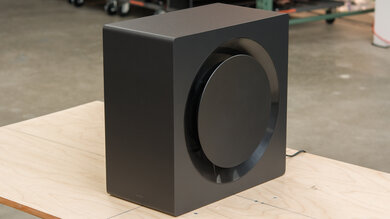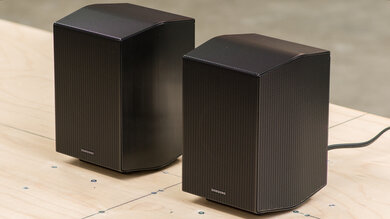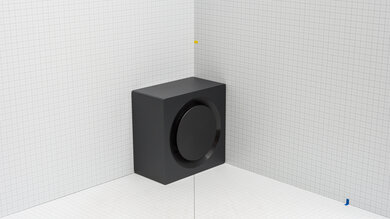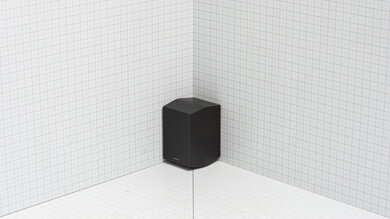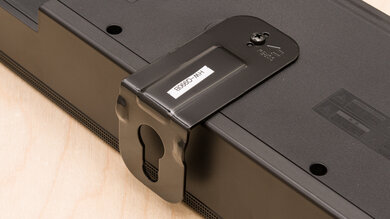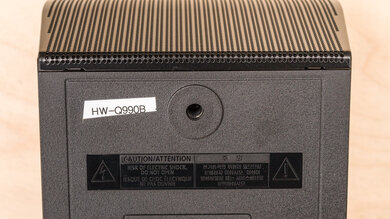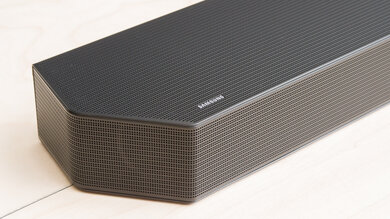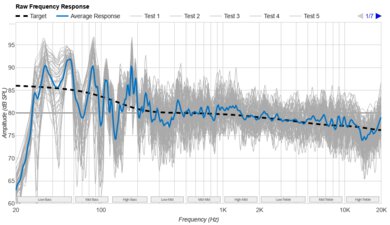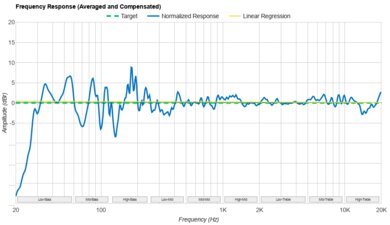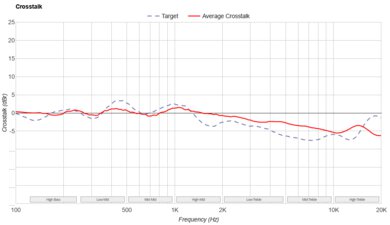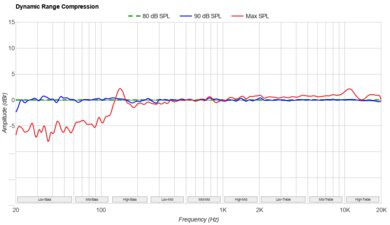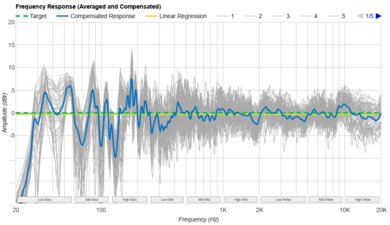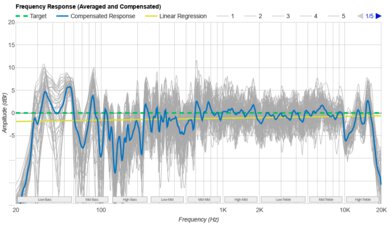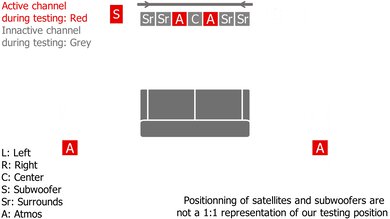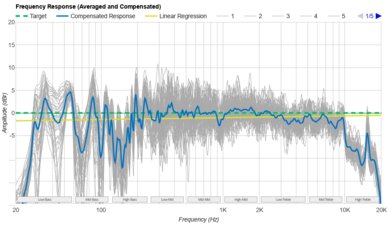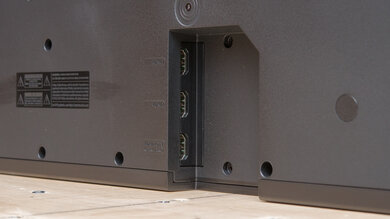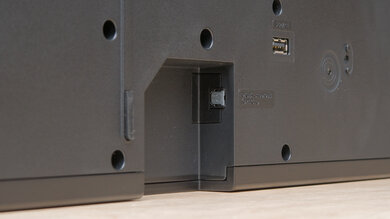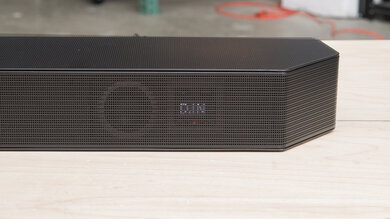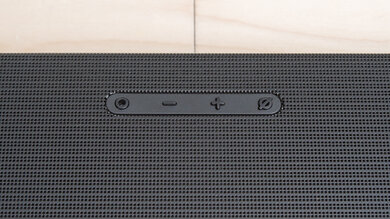The Samsung HW-Q930D is a 2024 soundbar from the Q Series, which encompasses the manufacturer's top-shelf soundbars. It's a 9.1.4 configuration boasting dedicated upfiring drivers for object-based audio formats like Dolby Atmos, an outboard subwoofer, and two satellite speakers. Made of high-quality metal and plastic, it makes a statement, but it's also more of an iterative change instead of a full makeover compared to the previous Samsung HW-Q930C.
Our Verdict
The Samsung Q930D is impressive for mixed usage. The soundbar supports most audio formats, including Dolby Atmos with up-firing drivers and other widely used formats like Dolby Digital and DTS. You can connect via eARC, HDMI In (for passthrough), and Optical, as well as most common wireless connections, so it works as an entertainment hub. It produces a balanced sound with ample low-end extension, and there are plenty of tools you can use to fine-tune the sound.
Balanced sound by default.
Support for most common audio formats.
Plenty of sound enhancement tools like room correction and EQ presets.
HDMI audio passthrough.
Graphic EQ is only available in 'Standard' mode.
Soundstage is good but not super wide and height seems a bit cramped.
The Samsung Q930D is impressive for watching dialogue-heavy media and TV shows. Its discrete center channel and stereo frequency response reproduce great-sounding speech, and the room correction tool ensures that the soundbar is optimized for your space. It also offers plenty of sound enhancement features like 'Voice Enhancement' and 'Night Mode' to suit various scenarios and media, alongside manual EQ. You can also crank the volume without losing the dynamics, and it exhibits low latency across various audio formats and connections.
Balanced sound by default.
Support for most common audio formats.
Plenty of sound enhancement tools like room correction and EQ presets.
Graphic EQ is only available in 'Standard' mode.
Soundstage is good but not super wide and height seems a bit cramped.
The Samsung Q930D is great for listening to music. It delivers your music with a balanced tuning that outputs a solid amount of low-end with a deep extension that allows you to feel the sub-bass. The mids are even and convey natural-sounding lead melodies alongside clear vocals. Its room correction tool tunes the frequency response to suit your room's acoustics, and you can use graphic EQ and presets to sculpt the sound to taste. You also have plenty of options for wireless connectivity, which makes it easy to integrate the soundbar into your home setup. Plus, it gets loud enough with little compression, so loud parts are loud, and the quiet parts stay quiet.
Balanced sound by default.
Tons of wireless connectivity.
Plenty of sound enhancement tools like room correction and EQ presets.
Graphic EQ is only available in 'Standard' mode.
Soundstage is good but not super wide and height seems a bit cramped.
The Samsung Q930D is impressive for watching movies. It sounds great out of the box, and you can tweak the sound via the graphic EQ, presets, listening modes for different usages, and extra tools like 'Voice Enhancement.' It also has a room correction tool to optimize the sound for the room. The soundbar supports most audio formats like Dolby Atmos for a cinematic experience, alongside the discrete satellites and subwoofers to playback DTS and Dolby Digital in surround. Its default sound offers a good amount of low-end rumble, natural-sounding dialogue, and detailed effects. With its extensive connectivity, you can expect low-latency audio, and you can use the soundbar as a hub if you have multiple devices.
Balanced sound by default.
Support for most common audio formats.
Plenty of sound enhancement tools like room correction and EQ presets.
Graphic EQ is only available in 'Standard' mode.
Soundstage is good but not super wide and height seems a bit cramped.
Changelog
-
Updated May 13, 2025:
We've updated the In The Box section to mention that the soundbar comes with power cables of different lengths.
-
Updated Apr 25, 2025:
The Video Passthrough To TV and Inputs/Outputs - Bar sections were updated to compare the Samsung HW-Q990F.
-
Updated Jan 30, 2025:
We mentioned the Sony BRAVIA Theater Quad in the Dimensions - Bar section of this review.
- Updated Dec 13, 2024: Review published.
Check Price
Differences Between Sizes And Variants
The Samsung HW-Q930D comes in one color, 'Black'. You can see the label for our soundbar. The soundbar is also known as the Samsung HW-Q935D in some regions, and we expect it to perform similarly, though some features may differ depending on the country.
If you come across another variant of this soundbar, let us know in the comments, and we'll add it to the review.
Popular Soundbar Comparisons
The Samsung HW-Q930D is the next generation of the Samsung HW-Q930C, and they're very similar soundbars. They're tuned slightly differently out of the box. Compared to the predecessor, the HW-Q930D adds FreeSync and G-SYNC passthrough, 'Party Mode,' which plays back mono audio for multi-room setups, and wireless connectivity with Chromecast. Otherwise, like the top-tier Samsung HW-Q990D, they all use the same app and sport similarly in-depth controls over the sound, such as EQ and channel adjustments. If you have cash to spare, need an extra HDMI port, and want HDMI 2.1 passthrough at 4k 120Hz, the HW-Q990D can get louder to fill out a big room, but this may also be a case of diminishing returns if you're debating upping the budget.
If you want to see how other bars on the market stack up, check out the best soundbars, the best soundbars with a subwoofer, and the best Samsung soundbars.
The Samsung HW-Q990D and Samsung HW-Q930D are both 2024 soundbars, with the HW-Q990D sporting extra drivers and can get louder. That said, both soundbars support plenty of audio formats and include useful tools to sculpt the frequency response. For most people, which you should choose depends more on your budget and whether you need to fill out a large room.
The Samsung HW-Q990F is better and more widely available than the Samsung HW-Q930D, which is exclusive to Best Buy, though it's close. The HW-Q990F boasts a bit more balanced sound out of the box, as well as an extra HDMI In port for added connectivity. It's also HDMI 2.1 class-compliant, which is useful for 4K gaming (at 120Hz) with next-gen consoles. On the other hand, the HW-Q930D also sounds great and has a comparable suite of tools to alter the sound, if you can give up the HDMI 2.1 and extra HDMI In port.
The Samsung HW-Q930D is a more premium offering from the brand than the Samsung HW-Q800F. Most significantly, the Q930D includes dedicated rear satellite speakers, which offer a more immersive surround experience than the Q800F's virtual surround approach. The Q930D also supports G-SYNC and FreeSync passthrough, which some gamers may appreciate. In terms of Atmos playback, both soundbars offer 5.1.2 configurations with up-firing drivers, though the added rear speakers on the Q930D lend more realism to spatial effects.
The Samsung HW-Q930D offers more channels than the Samsung HW-Q800D, and which is better depends on your space and budget. They're tuned similarly and include plenty of sound enhancements like room correction, graphic EQ, and various listening modes. Both soundbars also support most common audio formats, though the main draw to the HW-Q930D over the HW-Q800D is the slightly better Atmos and surround sound performance thanks to its satellite speakers.
Test Results





